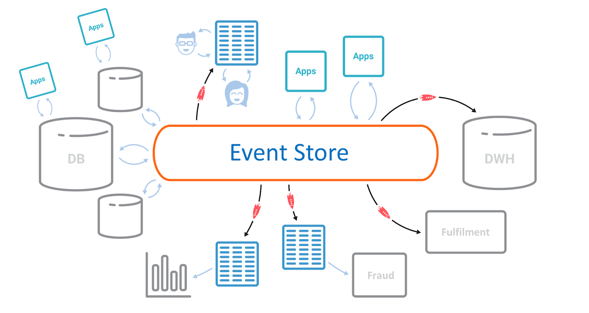As a business owner, you’re well aware of the impact your company’s data sources have on your operations. Data is the fuel that powers all modern business entities. While businesses have been utilizing digital operations for years, what’s changing is the way in which business data is collected, organized, and applied. In order to deploy different data management techniques, you need a robust and dynamic business intelligence software integration for your business.
One emerging type of software and data management system is the event-driven architecture. This type of deployment is a simple example of how data management software is evolving to allow business entities to approach their data assets in a different way. By shifting the focus and perspective of your team, your employees will be able to respond to various business issues more effectively and in real-time. The following are some of the top event-driven architecture integrations and their major use cases.
What is EDA?
In order to understand what an event-driven architecture (EDA) is, we need to establish the business definition of an event. The term event refers to any state change that occurs with any of your business systems. Regardless of industry, events are constantly happening within every business’s daily operations. In the past, businesses would rely on the result of any event to trigger any action or response, rather than the occurrence of the event itself. When you implement EDA in your business, your team will be notified as soon as an event happens, as opposed to waiting for the query, message, or incident to make it to their interface. EDA is the better choice for data management because it allows your team to be more prepared for any stream of events and provide strong consistency in their customer interactions.

By utilizing an event driven database, your team no longer has to depend on the traditional system of “request/response” workflows. Focusing on the stream of events themselves allows your business to accelerate your processes because it cuts out any sort of wait-time between the sender and recipient. With an event stream, your team can begin working on tasks with this real-time data as soon as the event occurs rather than depending on other systems’ or individuals’ functions in order to move forward. The event stream architecture allows your entire organization to function more proactively rather than reactively.
The Benefits of Deploying EDA
There are a plethora of benefits business entities can experience by integrating an event-driven system into their business processes. Event sourcing comes in many forms, and your various departments and teams can all utilize event-driven architecture systems for specific use cases. From your business transactions to your customer support queue, event sourcing can alleviate and accelerate your teams’ workflows.

The first use case and benefit of the event stream framework we will discuss is improved customer service operations. Your customer support message queue is one specific area in which event sourcing is particularly beneficial. The increased visibility that EDA provides allows your team to respond to a new event more efficiently and solve customer issues in less time. Strong consistency is key when it comes to customer interactions. Event-centric systems ensure your team has immediate access to essential customer data and can quickly identify and solve customer problems.

Another benefit of this strong consistency and increased efficiency is cost reduction. When your team is no longer constrained by wait times and the efforts of other individuals, they are able to complete projects and problem-solve in less time. In the business world, time is money. When you save on time, you’re saving money as a result. An added benefit of eventual consistency is its ability to help your team reimagine other business processes. Cost reduction in your supply chain comes much more easily when you’re changing the perspectives and frameworks within which your teams have been working.












